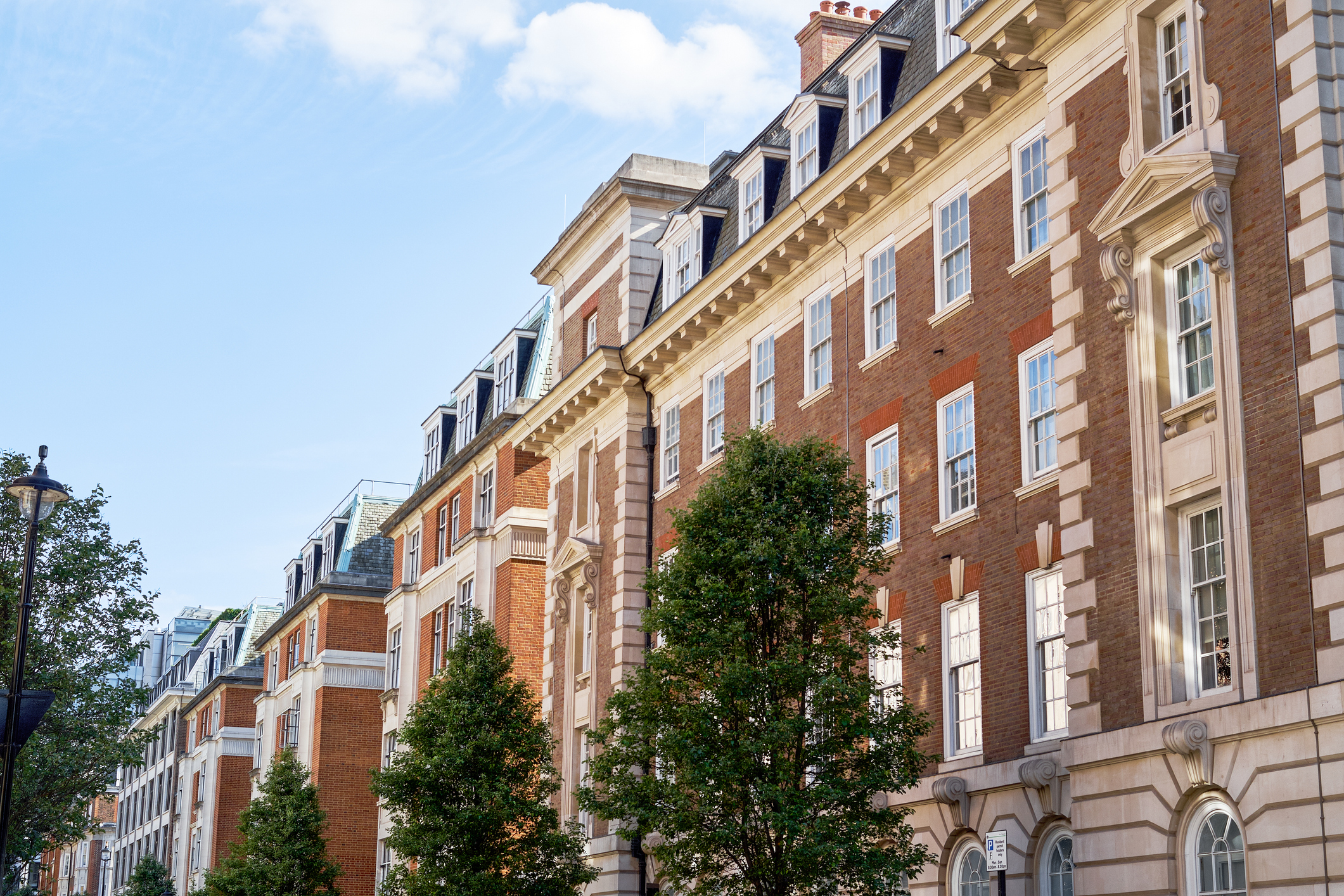Avoid the pensioner tax trap – six ways to reduce your tax bill in retirement
The state pension could rise by another 4-4.5% next April, before breaching the personal allowance a year later. It means more pensioners will be dragged into paying tax on their retirement income. We look at ways to cut your bill.


State pension payments have jumped in recent years under the triple lock policy, thanks to high inflation and wage growth.
However, income tax thresholds have remained frozen, meaning the state pension is now within touching distance of the tax-free personal allowance. This means pensioners may have to start paying income tax on their state pension in less than two years’ time.
The full new state pension is currently £11,973 a year, just £597 below the tax-free personal allowance, which has been frozen at £12,570 until April 2028. Forecasters think it will bust through this threshold by April 2027.
MoneyWeek
Subscribe to MoneyWeek today and get your first six magazine issues absolutely FREE

Sign up to Money Morning
Don't miss the latest investment and personal finances news, market analysis, plus money-saving tips with our free twice-daily newsletter
Don't miss the latest investment and personal finances news, market analysis, plus money-saving tips with our free twice-daily newsletter
This is because it is set to jump by 4-4.5% in 2026, based on the current outlook for inflation and wage growth. An increase of just 2.5% a year later (the minimum amount under triple lock rules) would be enough to cross over the allowance.
Many pensioners are already paying income tax as other sources of income push them over the threshold. The latest HMRC projections show 8.7 million people over state pension age are expected to pay income tax this year (2025/26). This figure is up 420,000 over the past year, and 1.85 million over the past decade.
“The pension tax-paying population is surging,” said Helen Morrissey, head of retirement analysis at investment platform Hargreaves Lansdown. “On the one hand, this can be celebrated as a sign of rising incomes among this population, but it’s also fair to say that frozen tax thresholds have played a huge part in dragging more pensioners into taxpaying territory.”.
With the tax freeze currently set to stay in place until 2028, Morrissey says the numbers will continue to swell. Speculation is also rising that the freeze could be extended for even longer – perhaps until 2030 – in an attempt to raise revenue at the Autumn Budget.
While there is little you can do about policy decisions, there are steps you can take to make your finances more tax efficient. We share six tips for retirees.
1. Withdraw the tax-free portion of your pension in instalments
When you first retire, you can access up to 25% of your pension pot tax-free. Lots of people take this as a one-off lump sum, however you can also withdraw it in a series of instalments. This is often a more tax-efficient route.
By leaving the bulk of the sum invested, you can continue to benefit from investment growth. Then, each time you make a withdrawal, 25% of it can be taken tax-free. If your pension pot continues to appreciate, the tax-free portion of it will continue to grow too.
2. Beware of emergency tax codes
Many savers will be taxed through an emergency tax code the first time they access the taxable portion of their pension pot. This means they are overcharged and need to either apply for a tax refund or wait until the end of the tax year for HMRC to rectify the issue.
The reason behind this is that HMRC taxes the first flexible withdrawal on a ‘Month 1’ basis. This means the withdrawal is taxed as if it will be the retiree’s income every month for the rest of the tax year.
One way people can avoid a large emergency tax bill is by making sure their first withdrawal from their pension is a small one.
“This helps ensure a more appropriate tax code is applied to future withdrawals – so you only pay the tax that’s due, rather than being hit with emergency tax you’d need to reclaim later,” said Clare Moffat, pension expert at financial services firm Royal London.
We share further details in our explainer on pension tax refunds.
3. Make the most of your tax-free allowances
If your state and private pension (plus any other taxable income) don’t push you over the £12,570 threshold, then you won’t have to pay any income tax. However, even if you do surpass this threshold, there are a range of tax-free allowances that you are entitled to each year. These include:
- Personal savings allowance: Basic-rate taxpayers can earn up to £1,000 in tax-free savings interest each year on balances held outside of an ISA. Anything held within an ISA is tax-free. The personal savings allowance drops to £500 per year for higher-rate taxpayers, before disappearing entirely for additional-rate taxpayers.
- Starting rate for savings: In addition to the personal savings allowance, you could be entitled to earn up to £5,000 in tax-free savings interest each year, if your annual income in retirement is less than £17,570. Those who earn £12,570 or less are entitled to the full amount. Meanwhile, those who earn between £12,570 and £17,570 will lose £1 of the starting rate for every pound they earn over the personal allowance.
- Investment income: You can earn up to £500 in dividends before tax is due (2025/26 allowance). Again, this applies to dividends earned outside of an ISA wrapper. Anything earned within an ISA is tax-free.
- Capital gains: You can realise up to £3,000 in capital gains (2025/26 allowance) before tax is due. Again, gains realised within an ISA wrapper will be tax-free, regardless of the amount.
It is worth making the most of these allowances to reduce your overall tax burden.
4. Be savvy when it comes to tax thresholds and only withdraw what you need
If your pension withdrawals tip you into a higher tax bracket, it might be worth reducing them slightly to bring you into a lower band. As well as reducing the amount of tax you pay on any earnings that exceed the threshold, this could allow you to hang onto valuable allowances like the personal savings allowance.
Historically, another perk of leaving money invested in your pension – i.e. only withdrawing as much as you need to comfortably live on – was that pensions were exempt from inheritance tax. However, these rules are set to change from April 2027, under a policy announced in the 2024 Autumn Budget.
The IHT rule change could impact the way some pensioners manage their retirement savings going forward, as anyone who inherits a pension after this date risks being hit with a double tax bill (inheritance tax and income tax). We share further details in a separate piece: “What is the 67% inheritance tax trap on pensions – and can you avoid it?”
Some pensioners have been increasing their pension withdrawals as a result – either to spend and enjoy today, or to give away to family members in the hope of reducing their inheritance tax liability.
“We would always advise clients to consider the income tax they will pay when planning pension withdrawals, but this question is becoming more important now that more savers are looking to take greater amounts out, in light of the IHT measure in the Budget,” said Gary Smith, financial planning partner at wealth management firm Evelyn Partners.
He added: “Those now looking to spend or gift more of their pension funds need to keep an eye on the tax they will pay as they withdraw funds, because that is a definite liability that they will have to pay, whereas in some instances the IHT might only be a notional future problem.
“If possible, keeping one’s taxable income on the right side of the next tax band can make sense, so for many people this might mean measuring their pension withdrawals so they do not push total annual income above £50,270 into higher-rate tax at 40%.
“For wealthier savers, the additional-rate boundary of £125,140 might be the upper limit – but retirees, just like workers, also suffer an effective marginal income tax rate of 60% above £100,000 of income, as that is where the personal allowance starts to be withdrawn.”
5. Plan as a couple
Being married or in a civil partnership comes with tax perks. As such, it is worth planning as a couple to reduce your overall tax burden in retirement.
“Relying on one person’s financial planning means you miss out on making the most of both of your tax allowances – for instance you will both have a personal allowance of £12,570 before you need to pay any tax,” Morrissey said.
Couples can also share assets between one another to take advantage of both of their annual dividend and capital gains allowances. If one partner is in a lower tax band than the other, they may also be charged a lower rate of tax on dividends and gains.
6. If you come out of retirement, continue paying into your pension
Research published by Standard Life in 2024 found 14% of retirees over the age of 55 had returned to work as a result of higher living costs and insufficient pension pots.
If this is you, then you might be tempted to use your workplace salary to fund your lifestyle right now rather than continuing to contribute to your pension. Alternatively, you might be tempted to stash it in a savings account or cash ISA for easy access further down the line.
However, it could be worth continuing your pension contributions, as doing this will allow you to benefit from pension tax relief and employer contributions, as well as potentially reducing the amount of income tax you pay.
Charlene Young, pensions and savings expert at investment platform AJ Bell, explains: “You can still pay into your pension even if you’ve already accessed it, and it might lower the income tax you pay.
“You’ll likely have a lower limit on what you can pay into your pension each year if you’ve already taken income from a private pension. This annual allowance (known as the Money Purchase Annual Allowance) will usually be £10,000 a year.
“But provided you don’t go over that and you’re under 75, paying into your pension could move you into a lower tax bracket as it reduces your taxable income.”
Get the latest financial news, insights and expert analysis from our award-winning MoneyWeek team, to help you understand what really matters when it comes to your finances.
Katie has a background in investment writing and is interested in everything to do with personal finance, politics, and investing. She previously worked at MoneyWeek and Invesco.
-
 Gilt yields fall to lowest level since 2024
Gilt yields fall to lowest level since 2024The cost of government borrowing is falling. A new bond issuing strategy could be helping bring gilt yields down.
-
 How the mansion tax could affect you even if your home is valued below £2 million
How the mansion tax could affect you even if your home is valued below £2 millionThe mansion tax will apply to homes worth above £2 million from April 2028 but even lower-value properties could be looked at, MPs have been told.
